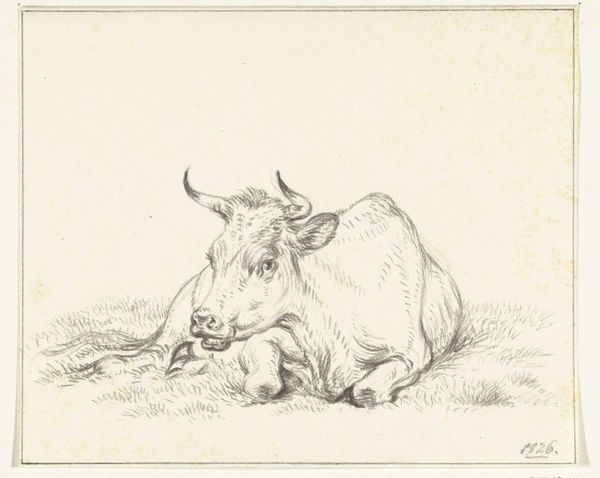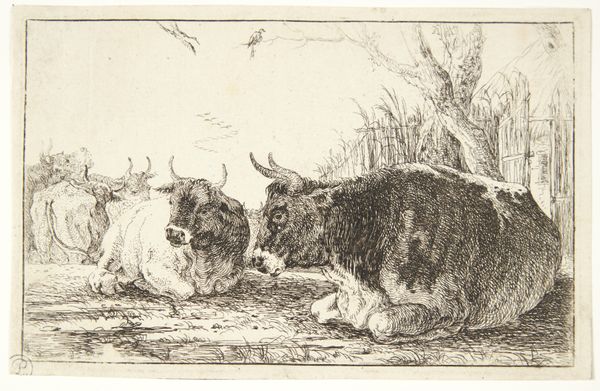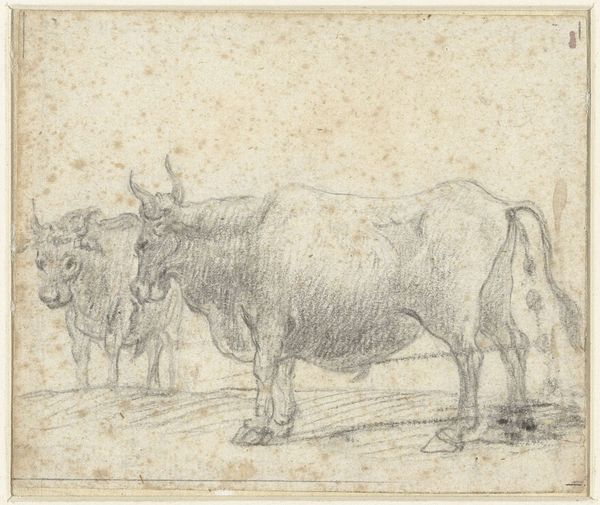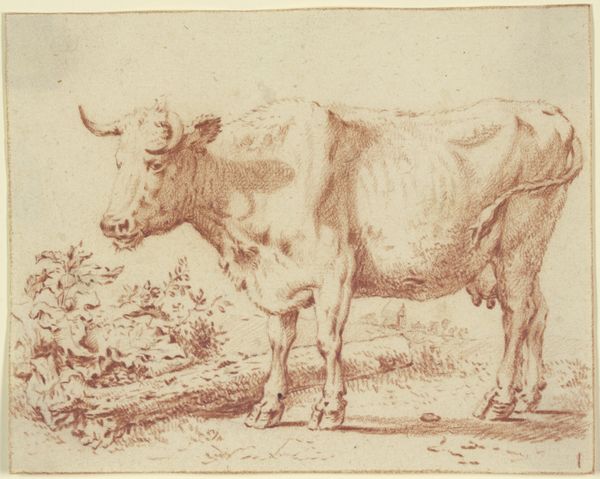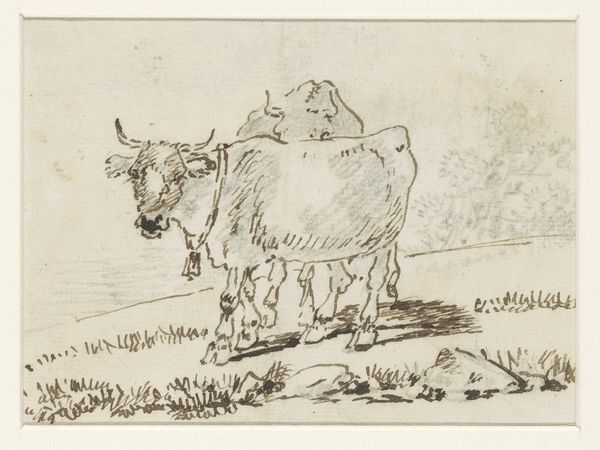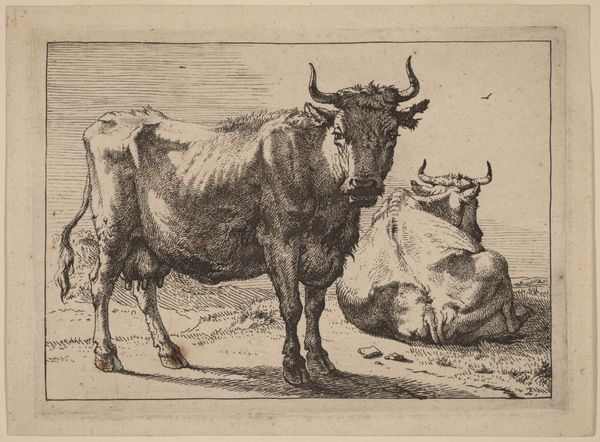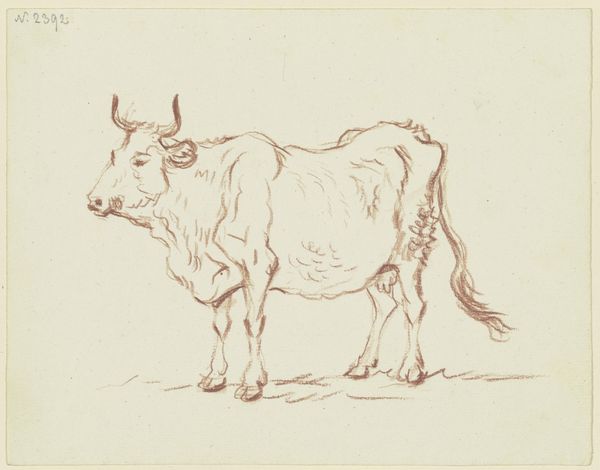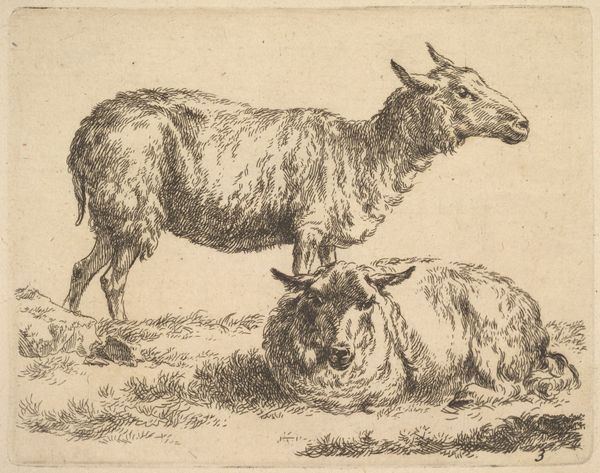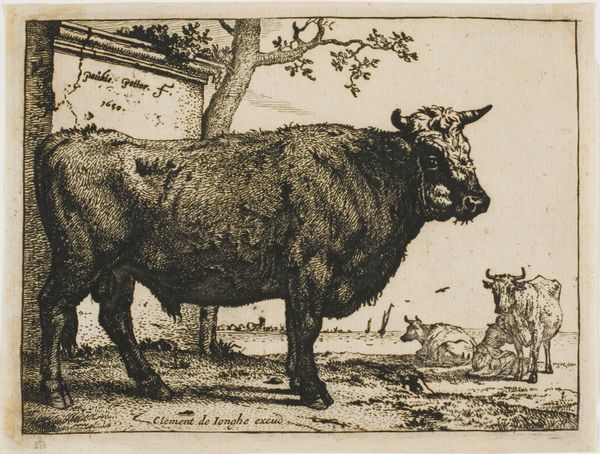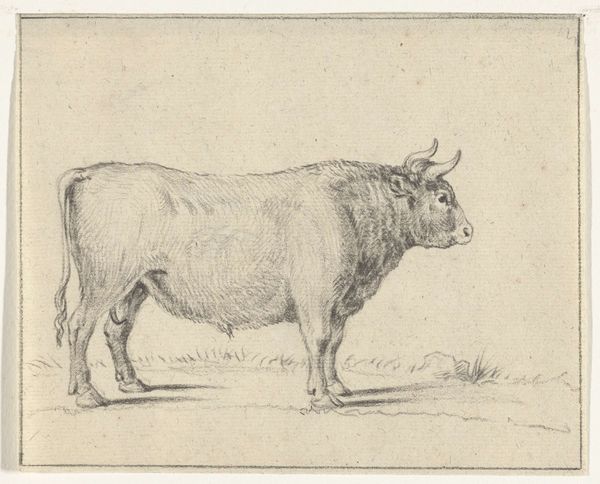
drawing, print, etching, paper
#
drawing
#
animal
# print
#
etching
#
landscape
#
paper
#
pencil drawing
#
realism
Dimensions: 100 × 138 mm (image); 105 × 144 mm (sheet)
Copyright: Public Domain
Curator: Ah, here we have "Cow Lying Down Beside a Tree," an etching on paper by Paulus Potter. Editor: Oh, this is so serene. It gives me a feeling of absolute stillness, a pause in the day. Like a visual exhale. The weight of that cow, pressed against the earth, it's lovely. Curator: Indeed. Potter was a master of animal depiction, capturing not just their likeness, but, arguably, a sense of their being. This etching, part of the Art Institute's collection, exists within the context of 17th-century Dutch realism, a period when depictions of everyday life became increasingly prominent. Editor: There's almost a meditative quality to it, the way the artist uses these subtle etched lines, building up the mass and weight. And that single tree, bending protectively over the resting creature... it feels incredibly tender. You almost want to lie down right next to it. Curator: Certainly. This piece reflects broader artistic trends, as artists like Potter played a pivotal role in crafting a national identity deeply rooted in the rural landscape and the value of agricultural labor. These images played a role in solidifying social values about agrarian ideals. Editor: Do you think Potter felt connected to nature, a bit of animism maybe? I feel like this cow is almost personified, elevated somehow through its intimate portrayal, like we are seeing through her sleepy eyes. Curator: Interesting perspective. While we can't know for certain Potter's intentions, examining the rise of animal portraiture allows us to reflect on societal power dynamics between humans, the environment and labor. How did representations contribute to these constructions, then and now? Editor: Mmm, that makes me reflect on where our food comes from and our disconnect from nature today. Even an image of pastoral comfort has roots in complex labor practices. Well, I am glad to pause and feel its calm. Curator: Me too. And by engaging with it critically, acknowledging the history and context that surrounds such deceptively simple pastoral imagery, we see beyond it and ourselves.
Comments
No comments
Be the first to comment and join the conversation on the ultimate creative platform.

